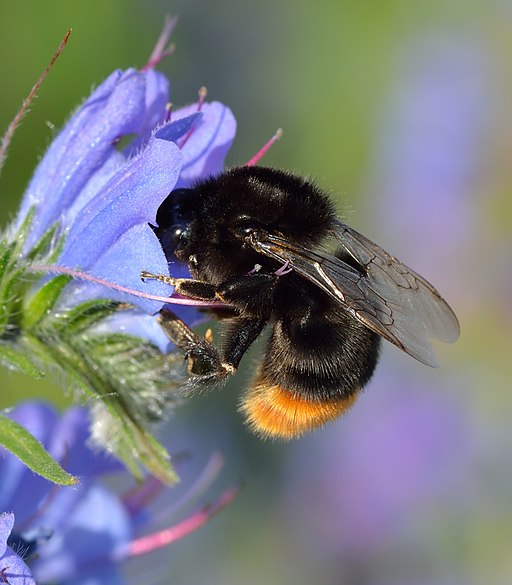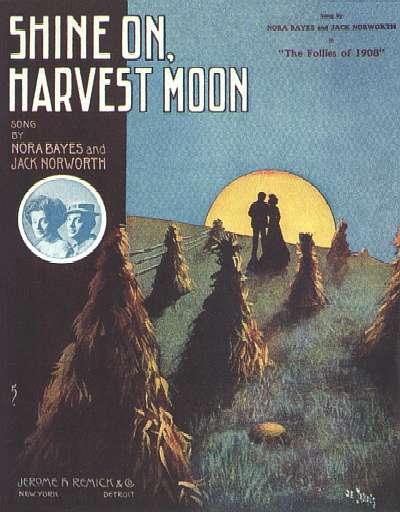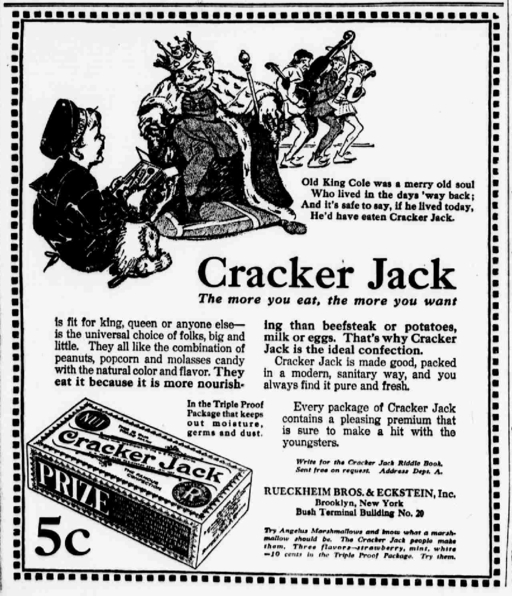Gardening starts with good soil, and container gardening is even more dependent on quality soil because the plant’s roots are constrained. The container soil has to supply all the minerals and nutrients the plant might need, though the gardener usually has to replenish them at least once during the growing season on account of the original supply leaching away. Spending a little more on quality potting soil is well worth it if quality is indeed what the product delivers. The plants will be healthier and look better if they are flowers, and they will be healthier in themselves and for you if they are vegetables.
The best commercial potting soils don’t have synthetically derived fertilizers mixed in, but instead have naturally derived fertilizers which cover a broad spectrum of a plant’s nutritional needs. The
difference for plants between potting soils with naturally derived fertilizers and those with synthetically derived fertilizers is like the difference for people between a nutritionally balanced, full meal, and an energy bar or drink. A gardener shopping in the garden center of one of the big home improvement chains is most likely to see options for plain potting soil (cheap), potting soil with synthetic fertilizer mixed in (middling), and the
greenwashed version from a major manufacturer such as
Scotts, makers of Miracle-Gro (expensive).
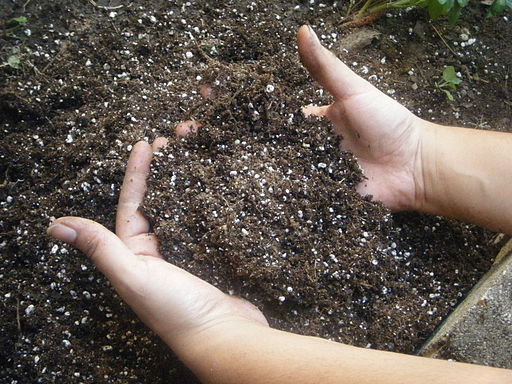 Hands sifting through potting soil in a garden bed; photo by M. Tullottes.
Hands sifting through potting soil in a garden bed; photo by M. Tullottes.
The plain potting soil offered at the big chains is often very low quality stuff not worth the savings. The middling priced stuff is better quality soil, but it almost always has synthetic fertilizer mixed in. Paying extra for the
greenwashed version is more likely than not giving your money to a corporation that doesn’t need it, but wants to crowd out honest competitors, because that is simply how big corporations operate. They’re cynically manipulating your interest in doing the right thing and your willingness to spend a little more to further that interest. It’s doubtful in that case whether spending the little extra does more for you the consumer than it does for their executives.
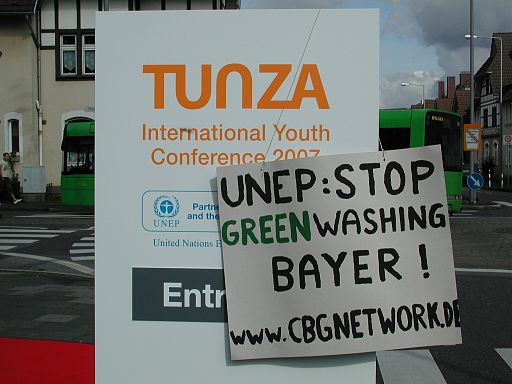 A protest sign hung over the sign announcing the 2007 International Youth Conference of the United Nations Environment Program (UNEP) in Leverkusen, Germany; photo by PhilippM2. The German pharmaceutical company Bayer manufactures neonicotinoid pesticides which have been implicated in the collapse of bee colonies worldwide.
A protest sign hung over the sign announcing the 2007 International Youth Conference of the United Nations Environment Program (UNEP) in Leverkusen, Germany; photo by PhilippM2. The German pharmaceutical company Bayer manufactures neonicotinoid pesticides which have been implicated in the collapse of bee colonies worldwide.
There are excellent potting soils available without synthetic fertilizers from honest manufacturers, but chances are you won’t find them at the big home improvement chains. Your best bet is a locally or regionally owned farmers co-operative or garden center. The price will be higher than the green-washed version available at the big chain, but it’s quality will probably be better, and there’s the satisfaction of paying that extra bit to decent people instead of fat cat executives for whom a few dollars more means nothing other than another martini on their expense account. A conscientiously managed local garden center or farmers co-operative is a gardener’s golden nugget amid the commercial tailings of the big chains. The customer service is almost always better at the mom and pop places, and that alone can be worth the higher prices.
One purchasing option that people are turning to more and more, even for bulk items like potting soil, is Amazon and other online retailers. They have the widest selection of anybody, and often the best prices even after including the cost of shipping. It’s hard to deny that combination, and then add in the convenience of shopping online and it’s completely understandable why more and more people shop for everything at Amazon. Keep in mind how they treat their employees, however, and balance that with brick and mortar stores, especially the mom and pop ones, where you can see for yourself at least part of the operation and how it is conducted. What you put into the soil shows itself in the plants which grow from it, and what you put into your community will just as surely show itself sooner or later.
― Izzy

